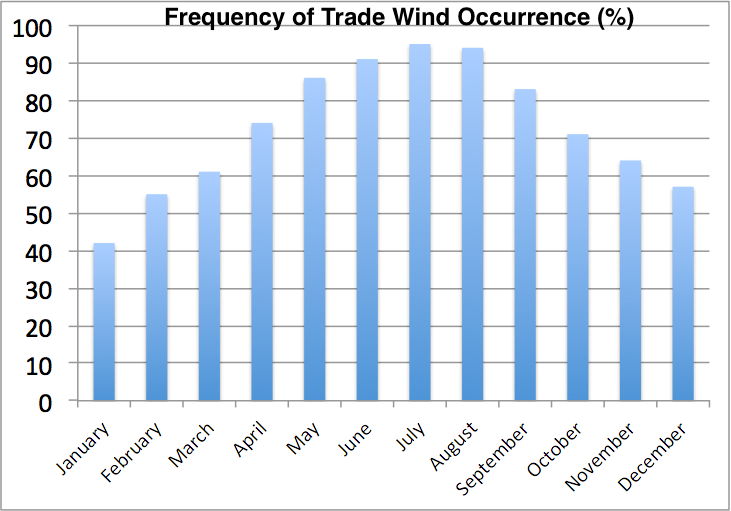- VMAP Home
- About VMAP
- Vog Forecast Discussion
- Vog Model
- Vog and Health
- Links
- Model Performance
- Disclaimer
- Weather Server
- Contact Us
|
We are in the process of updating this page. For current vog forecast please see the Alerts tab on the new Vog Model page. |
|---|
News and Items of Interest
|
Vog Climatology
The transport of volcanic aerosols, or volcanic smog (Vog), is primarily controlled by two factors - (1) the wind direction and (2) the height of the tradewind temperature inversion. The winds determine which direction the vog will be transported. Typically the winds in Hawaii are out of the northeast or east, as demonstrated by the graph below. This results in the vog being transported around the southern tip of the Big Island of Hawaii. The winds wrap around the westside of Hawaii and are often found over Kailua-Kona during these periods. When the winds are southerly, or are light, the vog is transported north over the northern end of Hawaii and across the northern islands of Maui, Molokai, Lanai, Oahu, Kauai, and Niihau. Again, from the graph below it can be seen that this will most likely occur during the winter months but can also happen in the spring and autumn. It is least likely to occur in summer (June, July, August) whenthe northeast trade winds are most persistent. The tradewind temperature inversion determines how high the vog can mix in the atmosphere. The trade wind inversion is typically between 2000 meters (6500 feet) and 2500 meters (8200 feet). Since the volcanic emissions are quite hot when they exit the vents the gas and aerosols rise quite rapidly, however, they mix with the surrounding air and cool just as fast. This results in large amounts of vog at higher elevations where it is trapped by the tradewind inversion, which it cannot mix across. Regions downwind of the volcano, be it to the south or north, are thus greatly effected near the base of the tradewind inversion and may experience high concentrations of vog periodically.


Photograph by M. Poland, November 13, 2008, USGS HVO.






